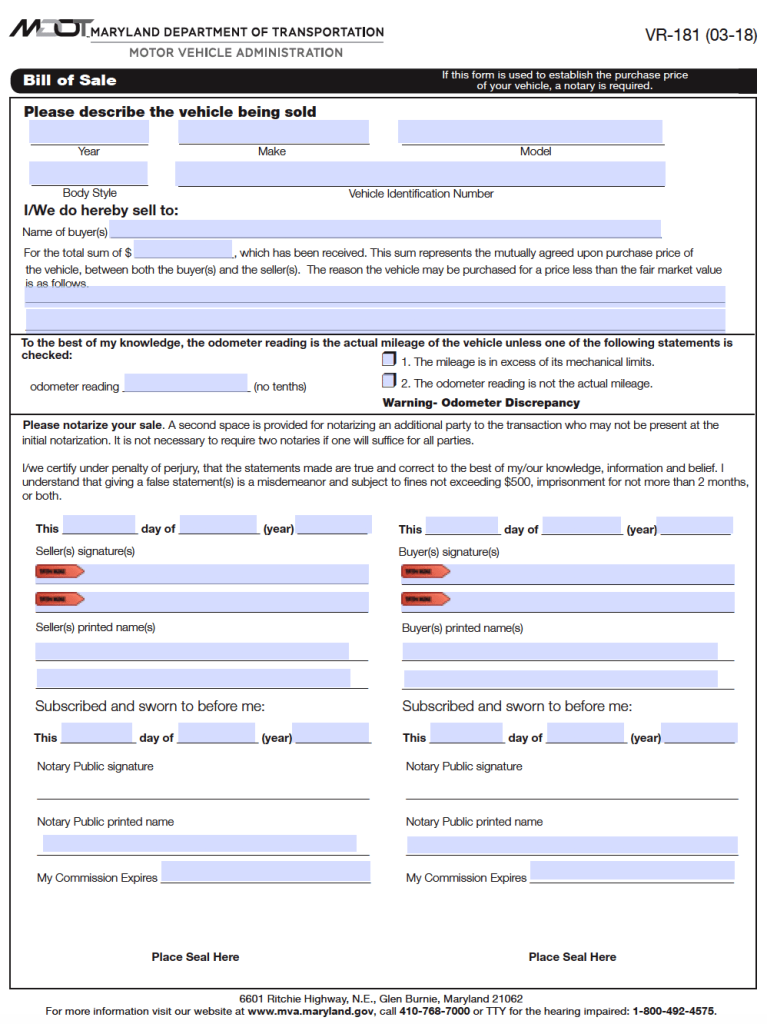How to Register a Vehicle
Maryland requires you to register your vehicle before driving on public roads. To do so, visit your nearest MVA (Motor Vehicle Administration) office and be sure to bring:
- The bill of sale attained from the dealership or private sale.
- A signed-over vehicle title (if it is a Maryland-issued title, utilize it as an application form).
- A valid Maryland Safety Inspection Certificate acquired by visiting a licensed Maryland inspection station for vehicle examination (only remains effective for 90 days after inspection).
- A Maryland-issued driver’s license.
- A filled out and signed copy of the Application for Certificate of Title – form VR-005 (this application encompasses registration and titling).
- Proof of a Maryland auto insurance policy.
- A completed Odometer Disclosure Statement (you can also write the statement on the back of the title).
- Necessary resources to appease any registration/tax payments.



